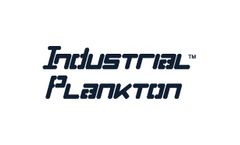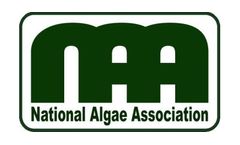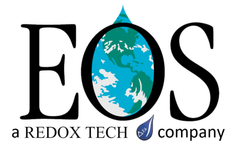Algae Biomass Articles & Analysis
27 articles found
Varicon Aqua & Academic Collaboration Varicon Aqua has been involved with many academic and professional research institutions over the years, adapting our developmental processes to the fast paced and dynamic aims of the research community. Each project is specific and bespoke, providing a range of challenges to our design team. Many of these design innovations find their way into the next ...
Algae Biomass Summit 2020 discussed Alternative Products from Algae. ...
Managing Production Risk Through Crop Insurance Facilitator: Devinn Lambert, Bioenergy Technologies Office, DOE kicked off this Session Spotlight on algae farming of the Algae Biomass Summit. Devinn works in the Advanced Algal Systems Program and is Co-Chair on the inter-agency working group on algae. This is one of the driving ...
Algae in Animal Feeds: Effective Market Entry This Algae Biomass Summit’s Spotlight Series was hosted by Valerie Harmon, of Harmon Consulting. ...
The general public, taxpayers, and the business and investment communities continue to ask about the algae product claims made by university algae researchers, lobbyists, DOE Algae Biomass/BETO and market research studies. They have been promoting potential algae products since the first algae ...
Algae are considered water pollutants because they form algal blooms in stagnant water. Algae harvesting technology, however, can help convert them into a useful industrial material like biomass. ...
Spirulina sp. grown in pretreated brewery effluent produced 1.562 mg/L biomass and reduced concentrations of nutrients to reach the permissible dischargeable limits. ...
The Langmuir isotherm model provided the best correlation with experimental data, and the monolayer biosorption capacity was 729.93 mg·g−1 within 120 min using 0.5 g·L−1 algal biomass and pH of 5. The pseudo-second-order kinetic model accurately described the adsorption kinetics data. ...
BUCHI Mini Spray Dryer B-290: Yield and total yield determination in spray dried microalgaes Recently, microalgal biomass has been recognized as a promising alternative source of raw material for biofuel production. Algal biomass has several advantages that may help to meet the need for the global demand of transport fuels, such as rapid growth rate, high lipid content, small land usage, and ...
ByBUCHI
Department of Energy (DOE), announced $15 million in funding for three projects that will work to improve algal biomass yields to reduce production costs of algae-based biofuels and bioproducts. The projects include Global Algae Innovations (San Diego, California), Algenol Biotech LLC (Ft. Myers, Florida), and MicroBio Engineering, Inc. (San Luis ...
Chemical modification of Spirulina platensis biomass was realized by sequential treatment of algal surface with epichlorohydrin and aminopyridine. Adsorptive properties of Cr(VI) ions on native and aminopyridine modified algal biomass were investigated by varying pH, contact time, ionic strength, initial Cr(VI) concentration, and temperature. FTIR and analytical analysis indicated that ...
On January 15, 2016, the U.S. Department of Energy (DOE) announced up to $15 million in funding for the development of algal biofuel intermediate technologies. Technology applicants should be likely to produce 3,700 gallons of algal biofuel intermediate per acre per year on an annualized average basis in an outdoor test environment by 2020. Applicants should also address a topic area within the ...
On October 2, 2015, at the 2015 Algae Biomass Organization Summit, the Algae Foundation announced a U.S. Department of Energy (DOE) funded education initiative to enhance algae workforce development. The Algae Foundation is a non-profit organization committed to expanding the algae industry ...
Engler, Ph.D., and other panelists on Thursday, October 1, at the Algae Biomass Summit, which runs September 29 - October 2, 2015, in Washington, D.C. This is where leading producers of algae products go to network with industry suppliers and technology providers, where project developers converse with utility executives, and where researchers ...
” BETO is seeking input from industry, academia, and other stakeholders regarding supply systems and services for the cultivation, logistics, and preprocessing of algal feedstocks. This RFI provides algae stakeholders with an opportunity to contribute their views on the requirements necessary to develop reliable and sustainable supplies of algal biomass, ...
We performed a multiple‐pulsed atrazine experiment to measure responses of autotrophic endpoints in outdoor stream mesocosms. The experiment was designed to synthetically simulate worst‐case atrazine chemographs from streams in agricultural catchments to achieve 60‐day mean concentrations of 0 (control), 10, 20, and 30 µg/L, respectively. We dosed triplicate streams with pulses of 0, 50, 100, ...
Acetone, butanol and other ketones are often detected at low levels during anaerobic bioremediation (Jacob et al., Battelle Bioremediation Symposium Proceedings, 2005). These compounds can be produced during anaerobic fermentation by the bacterium Clostridium acetobutylicum and a variety of related organisms growing on substrates such as potatoes, corn, rye, millet, cheese whey, apple pomace, ...
The aim of this paper was to test ammonium tolerance of the indigenous algae community of Lake Mälaren and to use this mixed consortia of algae to remove nutrients from biogas digestate. ...
Batch experiments were conducted to study the adsorption of hazardous cadmium onto low-cost algae biomass in aqueous solution with respect to concentration of adsorbate, adsorbent dosage, contact time, solution pH and temperature. ...
Algal remediation technology helps in pH correction of acidic mine water and effluent and complete reduction of sludge formation, the use of algae for the removal of pollutants from wastewater and CO2 from air. Algae use sunlight, water with carbon dioxide to produce fuel through photosynthesis which is a potential future energy source. ...









